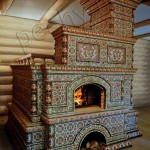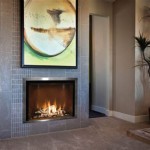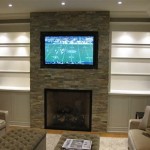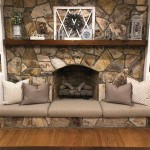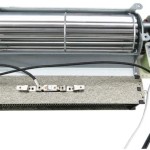The Enigmatic Appeal of a Trap Door in My Fireplace
The concept of a trap door concealed within a fireplace evokes images of clandestine activities, hidden passages, and long-forgotten secrets. While often relegated to the realm of fiction, the reality of a trap door integrated into a fireplace is not entirely uncommon, particularly in older homes and historic properties. The presence of such a feature raises questions about its original purpose, its potential uses today, and the factors involved in its discovery and maintenance.
The integration of a trap door into a fireplace is a significant architectural element that transcends mere aesthetics. It represents a decision made during the construction of the property, often driven by specific needs or circumstances present at the time. Understanding the historical context and the potential motivations behind its creation is crucial for appreciating its significance.
Historical Context and Potential Purposes
Fireplaces, historically, were more than just sources of heat. They were central gathering places, cooking areas, and often, the heart of the home. This central location made them ideal for concealing objects or creating hidden access points. A trap door in a fireplace could have served several purposes, depending on the era and the specific needs of the occupants.
One of the primary reasons for incorporating a trap door was security. In times of conflict or unrest, a concealed passage could provide a means of escape or a safe haven for valuable possessions. The fireplace opening, often overlooked due to its functional nature, offered a convenient and relatively inconspicuous point of entry to a secret room or tunnel. This was particularly relevant in periods of political instability or social upheaval, where the need for a secure hiding place was paramount.
Another potential use for a fireplace trap door was for smuggling or illicit activities. The clandestine nature of a hidden passage made it an ideal route for transporting goods or people without detection. While this might seem like a scenario straight out of a novel, historical records indicate that such practices were not uncommon, particularly in areas with high levels of illegal trade or political subversion. The fireplace, being a standard feature in many homes, provided a convenient and less suspicious means of concealing such activities.
Beyond security and illegal activities, trap doors in fireplaces also served more practical purposes. They could provide access to storage spaces, cellars, or even secondary heating systems. In some cases, the space beneath the fireplace was used to store firewood, tools, or other household items. A trap door allowed for easy access to these items without disrupting the main living area. Furthermore, in larger estates, these hidden passages could connect different parts of the house, allowing servants or staff to move discreetly without intruding on the privacy of the family.
Discovery and Identification
Discovering a trap door in a fireplace can be a surprising and often exciting event. However, identifying it and understanding its function requires careful observation and a methodical approach. The first step is to thoroughly inspect the fireplace itself, paying close attention to any irregularities or unusual features.
Look for seams or lines that suggest a section of the fireplace floor or wall might be detachable. Examine the mortar around the stones or bricks for signs of tampering or repair. A trap door is often concealed with a layer of soot and ash, making it difficult to detect at first glance. Cleaning the area can help reveal hidden hinges, latches, or other mechanisms that indicate the presence of a concealed opening.
Pay attention to the sounds the fireplace makes when tapped or struck. A hollow sound can indicate that there is a void behind the surface, suggesting the presence of a hidden chamber or passage. This method can be particularly useful in identifying areas that might be concealing a trap door. Compare the sound of different sections of the fireplace to identify any anomalies.
Once a potential trap door is identified, proceed with caution when attempting to open it. The mechanism might be old and fragile, and forcing it open could cause damage. Carefully examine the area for any obvious latches, levers, or hinges. Try to gently manipulate these components to see if they release the trap door. If the trap door is stuck, avoid using excessive force. Instead, try using a lubricant or penetrating oil to loosen any rust or corrosion that might be preventing it from opening.
Consider consulting with a professional contractor or historical preservation expert. They have the experience and knowledge to identify and open trap doors without causing damage. They can also provide valuable insights into the history and purpose of the trap door and the hidden space behind it.
Maintenance and Preservation
Once a trap door in a fireplace has been discovered, proper maintenance and preservation are essential to ensure its longevity and functionality. Neglecting these aspects can lead to deterioration, making the trap door difficult to operate or even causing irreversible damage.
Regular cleaning is crucial to prevent the accumulation of soot, ash, and debris that can clog the mechanism and make it difficult to open and close. Use a soft brush and a vacuum cleaner to remove loose particles. Avoid using harsh chemicals or abrasive cleaners, as these can damage the materials and finishes.
Inspect the hinges, latches, and other moving parts of the trap door regularly. Lubricate them with a suitable lubricant, such as WD-40 or silicone spray, to ensure smooth operation. If any parts are damaged or broken, replace them as soon as possible. Use replacement parts that are compatible with the original design and materials to maintain the integrity of the trap door.
If the trap door provides access to a hidden space or passage, ensure that the space is properly ventilated to prevent moisture buildup and mold growth. Install a dehumidifier or ventilation fan if necessary. Regularly inspect the space for signs of pests, such as rodents or insects, and take appropriate measures to control them.
Consider consulting with a historical preservation expert to develop a comprehensive maintenance plan for the trap door and the surrounding fireplace. They can provide guidance on the best practices for preserving the original materials and finishes, and they can also assist with any necessary repairs or restorations. Preserving the historical integrity of the trap door is essential for maintaining its value and significance.
The presence of a trap door in a fireplace is a unique and intriguing feature that adds character and mystery to a property. By understanding its historical context, carefully identifying it, and properly maintaining it, one can appreciate its significance and preserve it for future generations. The discovery and preservation of such a feature can provide valuable insights into the past and offer a glimpse into the lives of those who lived in the property before.
The careful attention to detail in researching the history of the house and its occupants might yield clues as to why the trap door was installed and what purpose it served. Local historical societies, archives, and libraries can be valuable resources for uncovering information about the property and the people who lived there.
Finally, ensuring the safety and security of the trap door and any associated passages is paramount. If the trap door leads to a hidden space, it is important to assess its structural integrity and ensure that it is safe to enter. If the passage is not in good condition, it may be necessary to reinforce it or restrict access to prevent accidents. It is also important to secure the trap door to prevent unauthorized access, especially if the property is open to the public or if there are children present.

Fireplace Ash Dump Service Full Chimney

4 I Have A Round Drop Down Trapdoor Style Damper How Do Plug The Flue Pipe Cleverly Solved
Ash Trap Draft Diy Home Improvement Forum
Ash Trap Draft Diy Home Improvement Forum

Remove A Gas Fireplace Merrypad

Learning About Masonry Fireplaces Parts Of A Fireplace

Open Fires V Wood Burning Stoves The Grate Debate Country Life

Achla Designs 9 5 In Tall Black Cast Iron Ash Dump Cover For Fireplaces Ad 01 The Home Depot

How To Open A Chimney Damper Traditional Fireplace Pros

10 Tips To Fireplace Safety This Season Mymove


